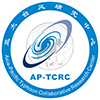Kei-Wai Cheung

Introduction
Dr Kei-Wai Cheung is an experienced researcher in the field of tropical cyclone and has published about 100 scientific papers and monographs with more than 1,200 citations. He was a member of the World Meteorological Organization's Expert Group on Tropical Cyclone Landfall Processes and a partner of Risk Frontiers, Australian Natural Hazards Research Centre.
Visiting details
During his visit, Dr Kei-Wai Cheung designed a new framework for analysing typhoon-environment interactions based on a data-driven approach and coupled complex network techniques to improve typhoon precipitation distribution patterns and rainfall prediction. The achieved results include:
1) A methodology for tracking tropical cyclones using complex networks was developed: networks are defined based on correlation metrics applied to average sea level pressure, and when defining networks based on a time-shift window, network metrics, known as the local aggregation coefficients, which are often considered as a measure of network smoothness, are good indicators of typhoon paths.
2) Identification of Typhoon Precipitation Distribution Patterns: During the landfall of a typhoon, precipitation distribution patterns are observed through station observations on land as well as satellite rainfall estimation covering the ocean surface. By analysing the empirical orthogonal functions, the typhoon rainfall at stations or regular grid points is downscaled to establish a simple representation of the rainfall pattern, which is used as a predictor in future prediction models.
3) Revealing the links between typhoon rainfall and intensity, structure and environmental factors. For the environmental factors affecting typhoon rainfall, a measure is developed to analyse the link between the networks.
During his one-month visit, Dr Kei-Wai Cheung successfully applied the complex network tracking method to the Northwest Pacific typhoon, revealing the influence of the environment on the variation of typhoon rainfall patterns under different intensity and structure groups.
